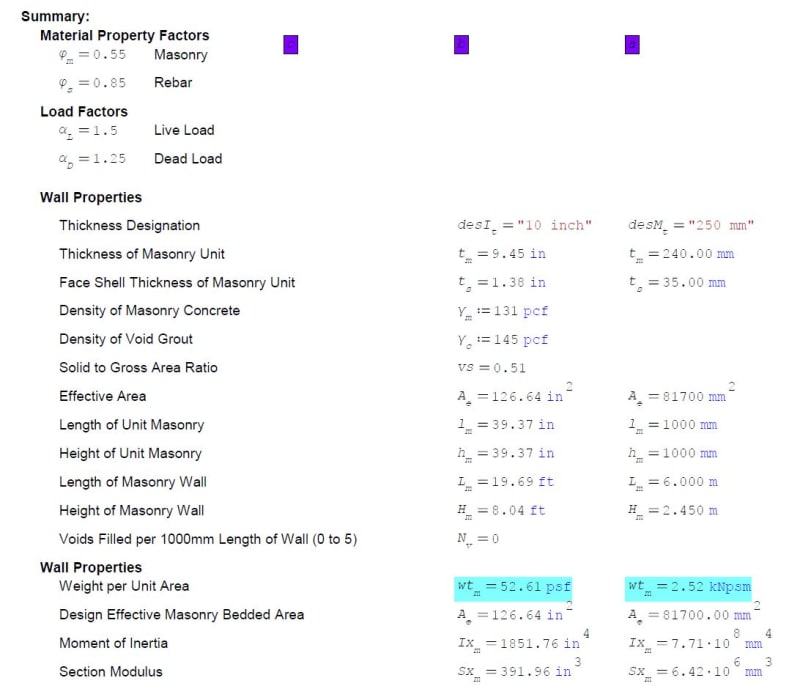Buleeek
Structural
- Sep 5, 2017
- 98
Hello,
Can someone write a formula for the net average moment of inertia (Iavg) of the CMU wall ? I have been trying to come up with a formula for Iavg but it is always way off the NCMA charts.
For example:
12" wall (11.625")
face shell = 1.25"
webs = 1.125"
spacing = 24"
Iavg = 1165.4 in2/ft
I appreciate your help. Thanks.
Can someone write a formula for the net average moment of inertia (Iavg) of the CMU wall ? I have been trying to come up with a formula for Iavg but it is always way off the NCMA charts.
For example:
12" wall (11.625")
face shell = 1.25"
webs = 1.125"
spacing = 24"
Iavg = 1165.4 in2/ft
I appreciate your help. Thanks.



